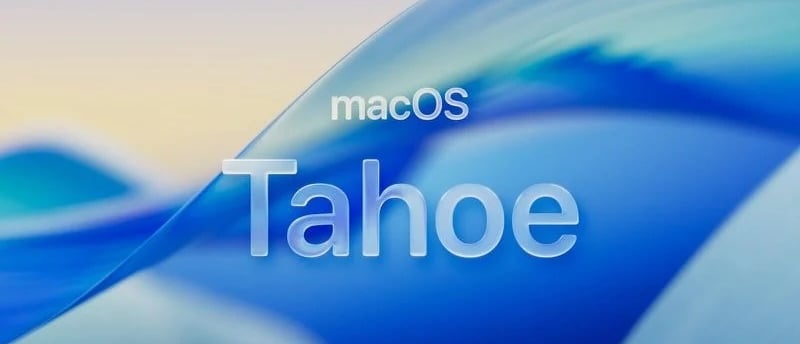macOS Tahoe
Apple has officially introduced macOS Tahoe, the next-generation operating system for Mac, bringing a wave of intelligent features, refined performance, and deeper cross-platform integration.
7/23/20253 min read


What’s New with macOS Tahoe? A Deep Dive into Apple’s Next Leap
Apple has officially introduced macOS Tahoe, the next-generation operating system for Mac, bringing a wave of intelligent features, refined performance, and deeper cross-platform integration. Whether you’re an end user, developer, or IT administrator, Tahoe signals a new era for the Mac experience — smarter, faster, and more connected than ever before.
In this post, we’ll explore:
✅ What’s new with macOS Tahoe
💻 Supported devices
⚔️ macOS Sequoia vs macOS Tahoe: Key Differences
🧑💻 Benefits for Developers
What’s New with macOS Tahoe?
macOS Tahoe introduces a variety of improvements across usability, performance, and AI integration. Here are some of the most notable enhancements:
1. Apple Intelligence (AI) Comes to macOS
Apple is embedding Apple Intelligence, its native on-device AI, directly into Tahoe. You can:
Summarize emails, documents, or web pages natively
Generate auto-replies, code snippets, or design mockups
Use natural language in Spotlight and Siri to get smarter, more contextual results
2. Siri Reimagined
Siri in Tahoe is now text-based by default (like ChatGPT), meaning you can type or speak requests.
Supports multi-turn conversations and understands on-screen context (like Android’s “Circle to Search”).
3. AI Writing Tools in Native Apps
Pages, Notes, and Mail now have built-in AI writing assistants.
Rewrite, summarize, or even create content drafts automatically — right inside your document.
4. Advanced Window Management
A new “Snap Layout” system allows easier multitasking — snap apps side-by-side, and Tahoe auto-suggests layouts like in Windows 11.
5. Private Cloud Compute
Apple introduces Private Cloud Compute (PCC) — when tasks are too large for your Mac, they’re securely offloaded to Apple’s private cloud (with no user tracking and full encryption).
6. iPhone Mirroring
With Continuity updates, you can now fully mirror your iPhone on Mac — including audio, notifications, and direct drag-and-drop from mobile apps.
7. Redesigned System Settings
Cleaner, more categorized layout
Easier access to privacy and AI-related settings
💻 Supported Devices for macOS Tahoe
Apple is focusing on Apple Silicon Macs, but many Intel models still get support (at least for this cycle). Here's the list:
✅ Supported Mac Models:
MacBook Air (M1 and later, 2020+)
MacBook Pro (2018 and later — Intel and Apple Silicon)
Mac Mini (2018 and later)
iMac (2019 and later)
Mac Studio (2022 and later)
Mac Pro (2019 and later)
🚫 Dropped Support (compared to Sequoia):
2017 Intel MacBook Pro
2017 MacBook Air
Some older Intel iMacs
If you're using an M-series chip (M1, M2, M3), you're fully in the safe zone.
AI Tools None Native Apple Intelligence
macOS Sequoia vs macOS Tahoe: What’s Different?
macOS Tahoe brings significant improvements over Sequoia, especially in AI capabilities and multitasking. Here’s how they compare:
AI Tools:
Sequoia had no system-wide AI features. Tahoe introduces Apple Intelligence — a built-in AI engine that powers text generation, summarization, image understanding, and more.Window Management:
Sequoia offered basic window resizing and tiling. Tahoe brings a new Snap Layout feature, allowing you to organize apps side-by-side with intelligent layout suggestions — similar to Windows 11.Siri Experience:
In Sequoia, Siri was voice-based with limited context. In Tahoe, Siri becomes smarter and more interactive — now supporting both text and voice input, along with contextual awareness of what’s on your screen.iPhone Mirroring:
Sequoia allowed some Continuity features like Universal Clipboard and Handoff. Tahoe goes further, allowing you to fully mirror your iPhone on your Mac, interact with apps, hear audio, and receive notifications in real-time.Writing Assistance:
There were no built-in writing tools in Sequoia. In Tahoe, AI-powered writing tools are now embedded across system apps like Mail, Pages, and Notes. You can rewrite, summarize, and generate content directly in-app.Private Cloud Compute:
Sequoia didn’t offer this. Tahoe introduces Private Cloud Compute, which securely offloads complex AI tasks to Apple’s encrypted servers — without tracking your data.Performance Optimization:
Sequoia was moderately optimized for Apple Silicon. Tahoe is heavily tuned for M-series chips, with AI-accelerated performance and better battery efficiency.System Settings Interface:
Sequoia had the standard settings layout. Tahoe refreshes this with a cleaner, more categorized System Settings app — including new controls for AI permissions and privacy.
What macOS Tahoe Means for Developers
Tahoe brings huge benefits for developers, especially those leveraging Swift, SwiftUI, and AI integrations.
💡 Developer Benefits:
Apple Intelligence APIs:
New frameworks to integrate AI summarization, text generation, image analysis, and intent recognition in your own apps.
On-device execution or offloaded to Private Cloud Compute with full privacy.
Enhanced SwiftUI:
Better animation handling
Improved support for window management with Snap Layouts
Context-aware UI rendering with AI suggestions
Xcode 16 Enhancements (Tahoe-optimized):
Built-in support for AI code suggestions (like GitHub Copilot)
Improved TestFlight feedback with AI-based summarization
More powerful UI previews with dynamic content
Simulator Updates:
You can now simulate Apple Intelligence behaviors to test integration before release
Developer Mode Improvements:
Advanced profiling for AI usage
More granular privacy sandbox testing for AI-related data
